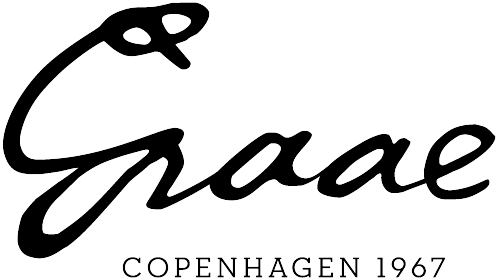The alligator leather we use comes from farms in Louisiana, U.S.A. Graae Copenhagen´s suppliers have committed to the highest standards of responsibility in accordance with the CITES agreement and have given their assurance that such farms in Louisiana contribute to the stable growth of wild alligators, thus protecting this endangered species.
For the alligator belts, we use the skin-parts from the belly and parts of the tail of the animal. For this reason, about 2 to 3 strips can be cut out of one skin on average and it takes up to 80 steps partially carried out by hand to produce an alligator belt.
Alligator skin is among the most precious leather types and has become one of the most sought-after materials within the luxury industry. Alligator belts combine quality, simplicity, and the highest technical standards. See our Solid Silver Collection made with alligator hide here.
This specially selected leather is obtained from the parts of the alligator where the smoothest and most evenly shaped scales are found. Their regular, yet still individual, size and shape give the belt a unique look.
What is the difference between an alligator and a crocodile?
There are 3 species of classic crocodilians available to the trade for commercial
purposes.
Common Name: American Alligator
Scientific Name: Alligator Mississippians
Origin: USA
Characteristics of Alligator Skins:
Long, rectangular shaped body; wide tail, throat, and snout
Organically shaped, and slightly rounded square tiles in center of belly; small, pebbled tiles on flanks
Umbilical scar is usually pronounced as well as small vertical lines at the bottom of the scales
Average farmed skin size is from 20/30 cm, ranging up to about 38/44 cm in limited quantity
Average wild skin is 48/52 cm wide, ranging as large as 90+ cm
Common Name: Nile Crocodile
Scientific Name: Crocodylus Niloticus
Origin: Africa
Characteristics of Nile Skins:
Short, round shaped body; narrow tail, throat, and snout
Geometric square shaped tiles in center of belly; large round tiles on flanks / similar in size to square tiles
Small “dot” or “pore” noticeable at the bottom center of the scales
Average farmed skin size is from 30/34 cm, ranging up to about 40/44 cm in limited quantity
Very few wild skins traded in the commercial market, however they can range up to 125 cm
Common Name: Saltwater Crocodile (also known as Porosus)
Scientific Name: Crocodylus Porosus
Origin: Australia and Papua New Guinea
Characteristics of Porosus Skins:
Short, round shaped body; narrow tail, throat, and snout
Geometric square shaped tiles in center of belly; small, pebbled tiles on flanks
Small “dot” or “pore” noticeable at the bottom center of the scales
Average farmed skin size is from 35/39 cm, ranging up to about 50 cm in very limited quantity

